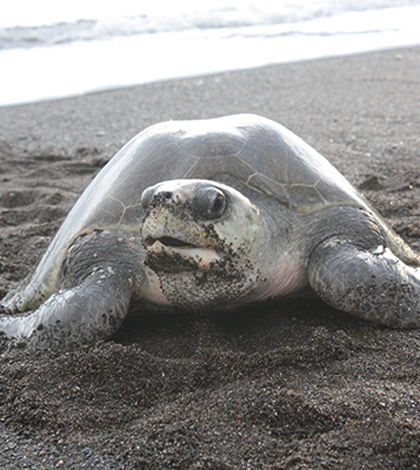Scientists tag endangered leatherback turtles at Costa Rica nesting site

Leatherback sea turtle (Credit: Lauren Cruz)
Scientists at the Leatherback Trust are working to tag endangered leatherback turtles with tracking devices, according to a release from the University of Delaware. Much of this work takes place in Parque Nacional de las baulas in Playa Grande, a nesting site in Costa Rica.
When female leatherback turtles come ashore to nest, they are tagged or – if they’re already tagged – logged as return visitors. The number of eggs that each turtle deposits are also counted.
Egg-filled nesting sites are protected until hatching. During that time, local Costa Ricans show vacationers the spots and teach them about the turtle species.
Image: Olive Ridley sea turtle (Credit: Lauren Cruz)




Lauren Cruz
March 9, 2014 at 11:44 pm
Dear Daniel Kelly,
I am so honored that you used my picture and posted an article based on the UD release! However there are some mistakes in this article. Parque National de las Baulas is a park that is in Playa Grande, making it one leatherback nesting beach that the Leatherback Trust works within. Also, the picture that you have used is actually a picture of an Olive Ridley sea turtle (not a leatherback) taken on Playa Nancite (not Playa Grande). I have pictures of leatherback sea turtle hatchlings on Playa Grande if you would like to update this article. If you would like more information on The Leatherback Trust, feel free to ask or consult the website leatherback.org.
Sorry for the confusion!
Lauren